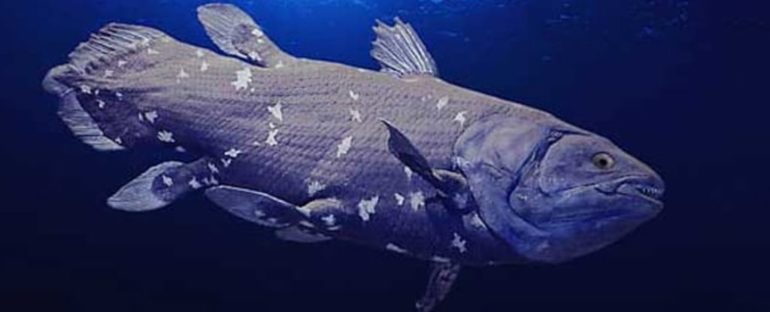In 1938, a living relic, thought 65 million years long extinct, was accidentally captured in a trawl net off the coast of South Africa.
The 2-metre (6.5-foot) long coelacanth (Latimeria chalumnae) turned out to be one of our closest fish relatives – looking largely unchanged since its most recent appearance in the fossil record back from the time of non-avian dinosaurs.
Now new genetic evidence shows this deep-sea predator has undergone hidden, but widespread evolution at a genetic level – by hijacking genes from other species.
While searching genetic databases for the ancestral version of a human gene involved in gene regulation, CGGBP1, University of Toronto molecular geneticist Isaac Yellan unexpectedly found coelacanth strangely has many variations of this gene.
Even more unusually, these different variations of the CGGBP genes didn’t all share a common ancestor with each other. This suggests that at some points around 10 million years ago, 62 of these genes were swiped by the coelacanth from other, unrelated species – through horizontal gene transfer.
These genes, with their ability to ‘jump’ around and even between genomes a bit like viruses, are known as transposons.
If they happen to jump into the right place in the genome, cellular machinery will copy them just like any other gene. But they can also jump into the wrong place, where they can be harmful and so are thought of as parasitic.
Occasionally though, they can end up in a position that’s useful to their host species and end up losing their ability to jump around but are conserved within their new place in the genome, which is what seems to have happened in the coelacanth, several times over.
“Horizontal gene transfer fuzzies up the picture of where the transposons came from but we know from other species that it can occur via parasitism,” said Yellan. “The most likely explanation is that they were introduced multiple times throughout evolutionary history.”
While it’s common to find transposons like these in many species, it’s unusual to find so many.
Test tube experiments and computer modelling demonstrated at least eight of the proteins that these genes code for bind to distinct repeated sequences of DNA, suggesting that – like the human version – they are involved in gene regulation. Some of them are only expressed in specific tissues.
“We don’t know what these 62 genes are doing, but many of them encode DNA binding proteins and probably have a role in gene regulation, where even subtle changes are important in evolution,” explained University of Toronto molecular geneticist Tim Hughes.
Coelacanth have leg-like lobed fins and are more closely related to us and our closest fishy relatives, the lungfish, than other types of fish. Our very distant shared ancestor means the coelacanth’s genome has the potential to help us unravel many mysteries about our own evolution.
Unfortunately, these fish are rarely seen and endangered, so opportunities to study them are limited. But the information we have from them is already proving fruitful.
A recent study on their genes suggests our bitter receptors may have roles beyond protecting us from toxic substances, like metabolic regulation and hormone sensing. Now coelacanth genes have demonstrated transposons potentially play a larger role than we realise in tetrapod evolution.
“Our findings provide a rather striking example of this phenomenon of transposons contributing to the host genome,” said Hughe.
This research was published in Molecular Biology and Evolution.



